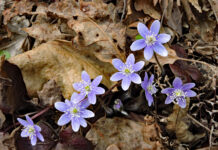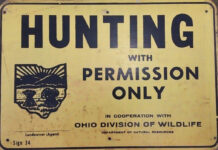My wife, Linda, does most of our Christmas shopping, but occasionally I’m inspired to buy a few special gifts. A few weeks ago I introduced my grandson, 5-year-old Garek, to owl pellets.
I had been browsing through the www.acornnaturalist.com website when I noticed it offered owl pellets for dissection. Then I noticed the Owl Pellet Investigation Field Biology Kit.
It included three barn owl pellets, a plastic magnifying lens, a plastic forceps, and some printed matter. The price was $18.95, which I thought was reasonable.
Linda told me I was crazy. He’s only 5 years old, she said. So what is an owl pellet, and why did I think it appropriate for a kindergartener?
Owl pellets are the indigestible remains of prey that owls consume. Owls typically swallow their prey whole or in large chunks.
Nutrition absorbed
The digested soft tissue then finds its way into the intestine where the nutrition is absorbed. The indigestible parts — bones, teeth, feathers, feet, fur, and chitinous remains of insects — are compressed in the gizzard and then regurgitated through the mouth as “owl pellets.”
By dissecting owl pellets, biologists can reconstruct what owls have been eating. I remember the first time I examined owl pellets -— I was mesmerized.
By carefully tweezing apart the pellet, I found entire skulls, jaws, teeth, fur and feathers of mice, voles, shrews, and small birds.
Each pellet is a mystery; you never know what it might hold. Garek loves nature and is curious about every natural artifact he finds, so I suspected he would be equally intrigued.
Much to my disappointment, on Christmas morning Garek opened the box and promptly tossed it aside. There were other gifts that looked like so much more fun. But the next day I asked Garek if he’d like to check out the owl pellets.
Exploring the pellets
He agreed. Each sterilized pellet was wrapped in aluminum foil and measured about two inches long and an inch wide. The pellets were tightly packed wads of fur, and Garek did not even want to touch them.
So he watched as I first broke the pellet in half and began to pull apart the fur. In seconds I pulled out several ribs, a lower jaw with a full set of teeth, and a half dozen leg bones.
Garek seemed fascinated, and when I pulled out the first of three complete skulls, he was hooked. Now he wanted to help pull the pellet apart and touch the bones. For almost an hour, we worked on two pellets and pulled out five entire skulls (three deer mice and two voles), one entire mouse tail, and dozens of ribs and leg bones.
When a classmate from school came by a few hours later, Garek told her all about owl pellets.
At that point, even Linda admitted that my gift turned out to be a pretty good idea. If nothing else, Garek will remember the Christmas his crazy grandfather gave him an owl pellet kit.
Pellet places
Owls regurgitate pellets several hours after consuming a meal. They usually return to favorite perches to bring up pellets. Over time, piles of pellets can accumulate under these perches. If you find such a pile of pellets, you can return several times a week to collect more.
The practical value of studying owl pellets is that they give us a great idea of what owls eat and how diet changes seasonally. In summer, for example, you might even find fish bones in owl pellets.
If you have some large trees in the backyard or live near some woods, there are definitely owls in the neighborhood. Eastern screech-owls, great horned owls, and barred owls are common and widespread.
And by the way, you don’t have to be an expert to dissect owl pellets with your kids or grandchildren. The kit comes with a handy bone ID sheet that illustrates the most common bones of rodents, shrews, moles and birds.
Next time you need a gift for a budding naturalist, consider owl pellets. They could be the sparks that inspire a young biologist.












